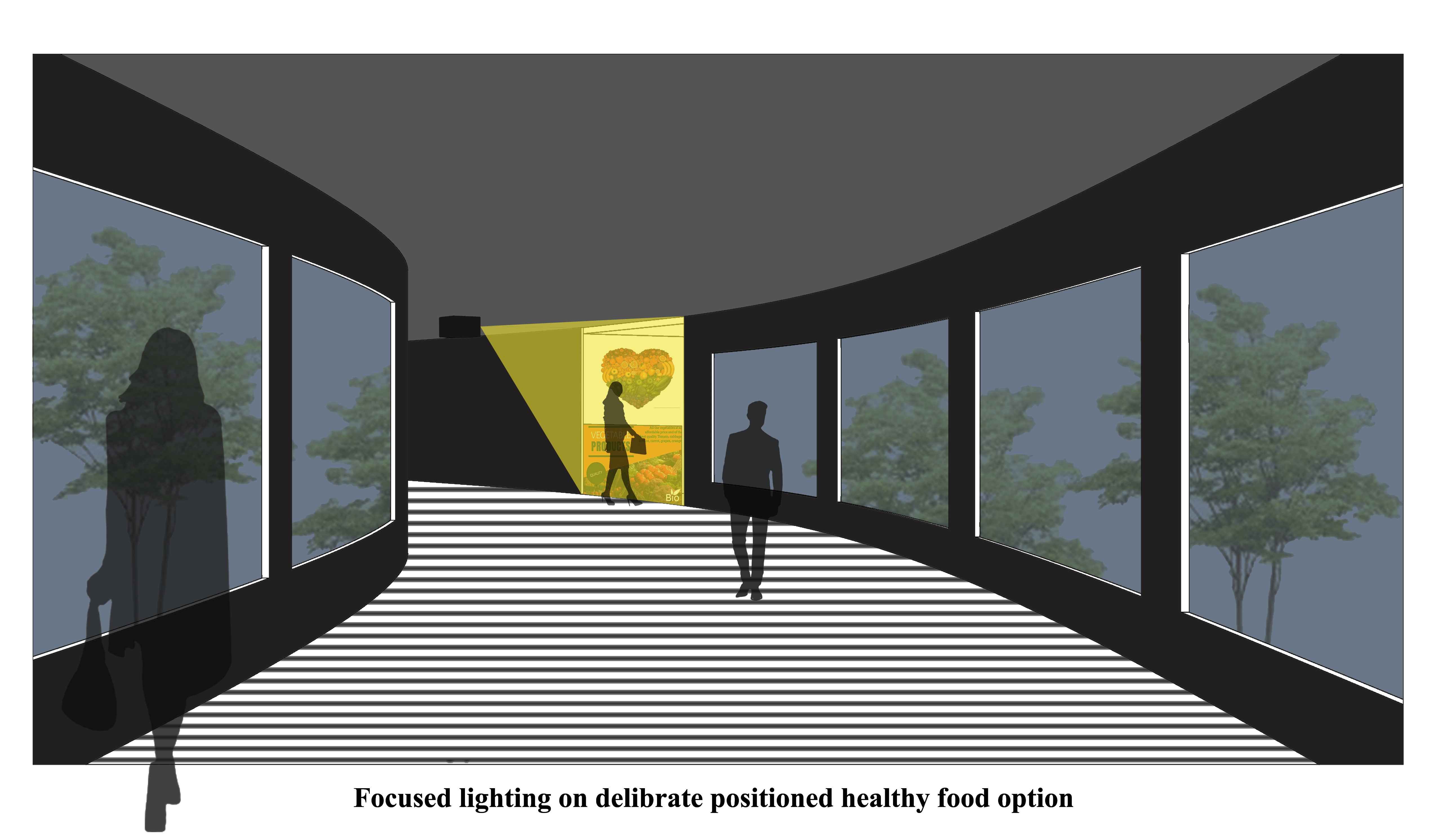︎ Healthy Points of Decision through Accessibility and Visibility
How do the concepts of “Mobility and Accessiblity” improve student ability to seek healthy food options?
By Irene Routte ︎ , Saranmegha Parimi ︎


Hypothesis
University students face many barriers to healthy eating, such as time constraints, conveninece to high calorie food, high prices, scarcity of healthy food options and easy access to junk food. If we design for individuals to both be drawn to certain points at centralized and decentralized levels, and design for easier access to healthy food options at points of decision at each these levels, students will make overall healthier food choices. By focusing on placement design and focused lighting, we can better support students in accessing healthy food options.
University students face many barriers to healthy eating, such as time constraints, conveninece to high calorie food, high prices, scarcity of healthy food options and easy access to junk food. If we design for individuals to both be drawn to certain points at centralized and decentralized levels, and design for easier access to healthy food options at points of decision at each these levels, students will make overall healthier food choices. By focusing on placement design and focused lighting, we can better support students in accessing healthy food options.
- Why?
University students have both time and structural barriers in accessing healthy food options on campus.
- How?
Through the use of focused lighting and placement of healthy food options at specific locations.
- What?
Our interventions are based on how they connect to overall intrapersonal and environmental needs of students in a University environment - the easing of stress and anxiety due to time constraints, the desire to socialize and the peer pressure surrounding group food choices. Strategic decentralized healthy food options along student’s paths between activities allows for greater accessibility, decreasing stress of being able to access food in a timely manner. Students who are deciding on meal times based on wanting to be in a space of socialization will also be met with healthy food options in a centralized space to decrease on poor food choices based around peer pressure. Both decentralized and centralized spaces use focused lighting in order for students to be drawn to the healthy food options at both levels.
- So What?
These interventions promote the needs of students (decreasing anxiety around time, desire for connection and decrease in peer pressure) while offering healthy food options at critical points of decision. By making these adjustments to the environment, we allow students to make healthier choices daily.

The design continuum shows the topics based on “point of decision strategies” for college students
Design to Outcomes
We believe that by building both decentralized and centralized healthy food options within a University environment will promote making healthy food choices at points of decision for a student which meets their needs of both accessibility/time, as well as socialization.

︎︎︎Download Centralization & Decentralization Poster
︎
Works Cited1. Kim,Chŏng-yŏn.(2014).Impulse buying:Theeffect of decision time and product scarcity on buying impulse.
2. Kuijsters,A.,Redi,J.,deRuyter,B.,& Heynderick,I.(2015).Lighting to Make You Feel Better: Improving
the Mood of Elderly People with Affective Ambiences.PloSone,10(7).
3. McCloughan,C.L.B.,Aspinall,P.A.,& Webb,R.S.(1999).The impact of lighting on mood. International Journal of Lighting Research and Technology,31(3),81–88.
4. Sogari, Giovanni, Catalina Velez-Argumedo, Miguel I. Gómez, and Cristina Mora. 2018. "College Students and Eating Habits: A Study Using An Ecological Model for Healthy Behavior" Nutrients 10, no. 12: 1823. https://doi-org.proxy.lib.umich.edu/10.3390/nu10121823
5. Song,S.,& Yamada,S.(2019).Ambient lights influence perception and decision-making. Frontiers in
Psychology,9.. https://doi.org/10.3389/fpsyg.2018.02685